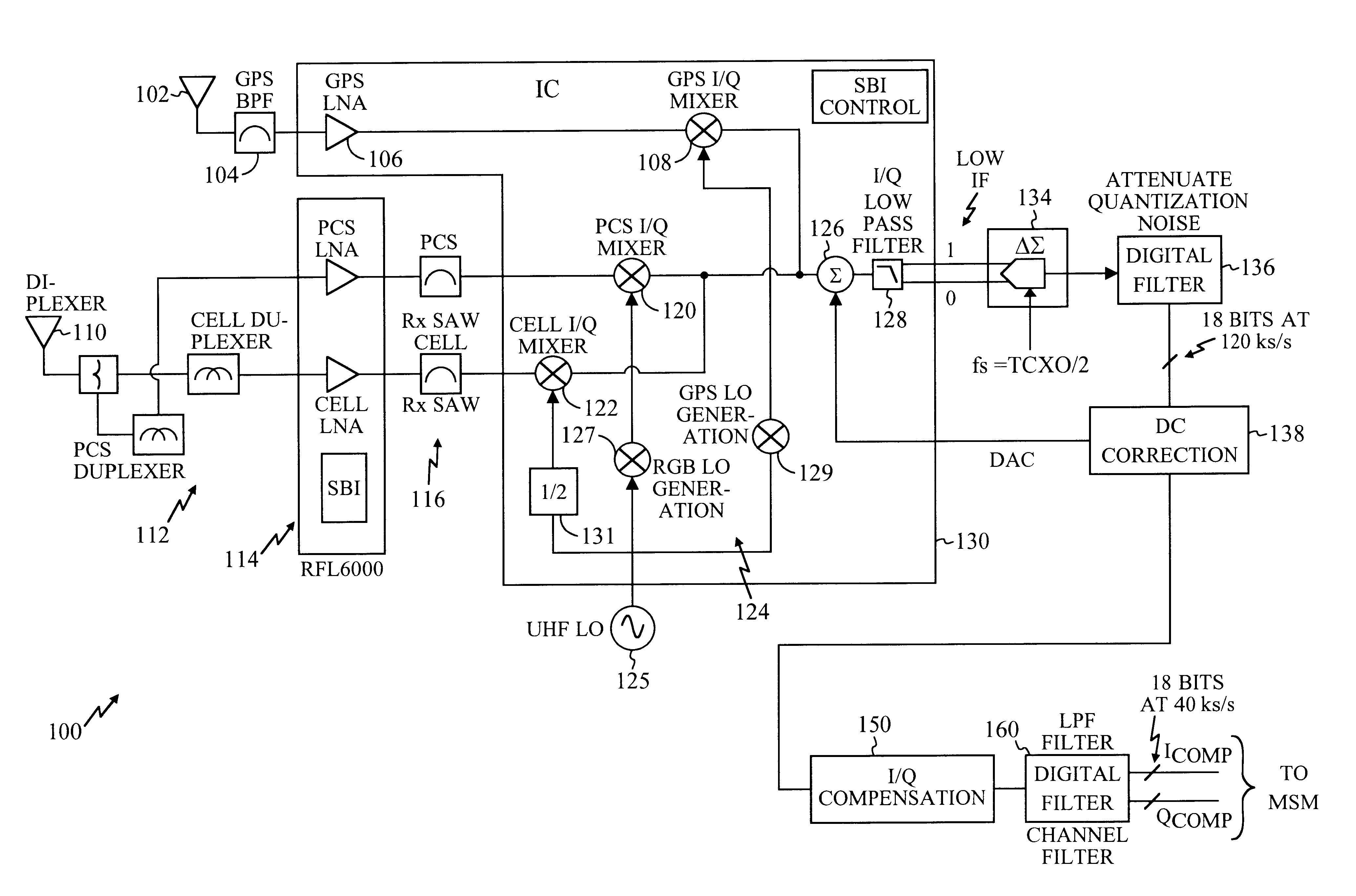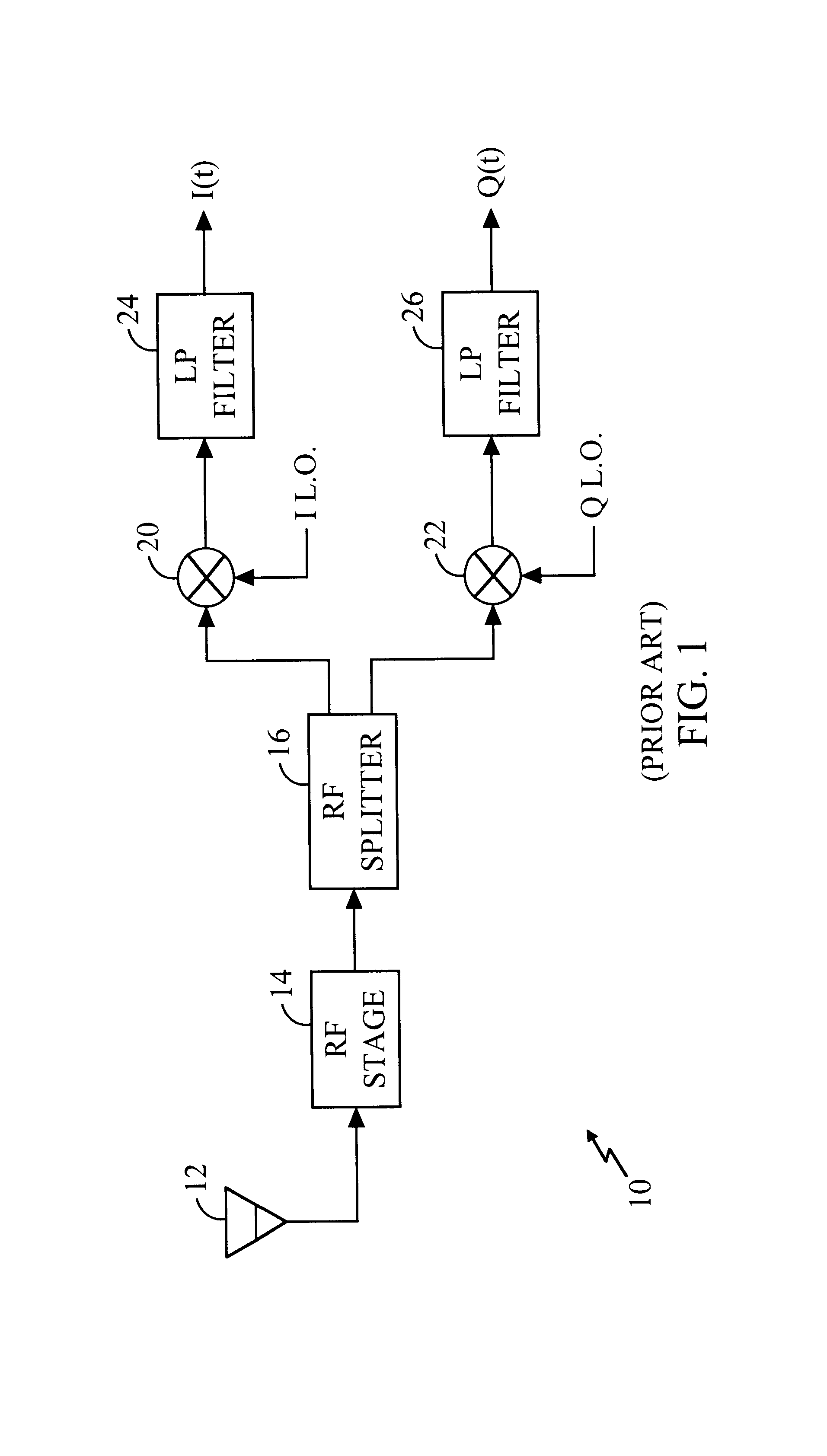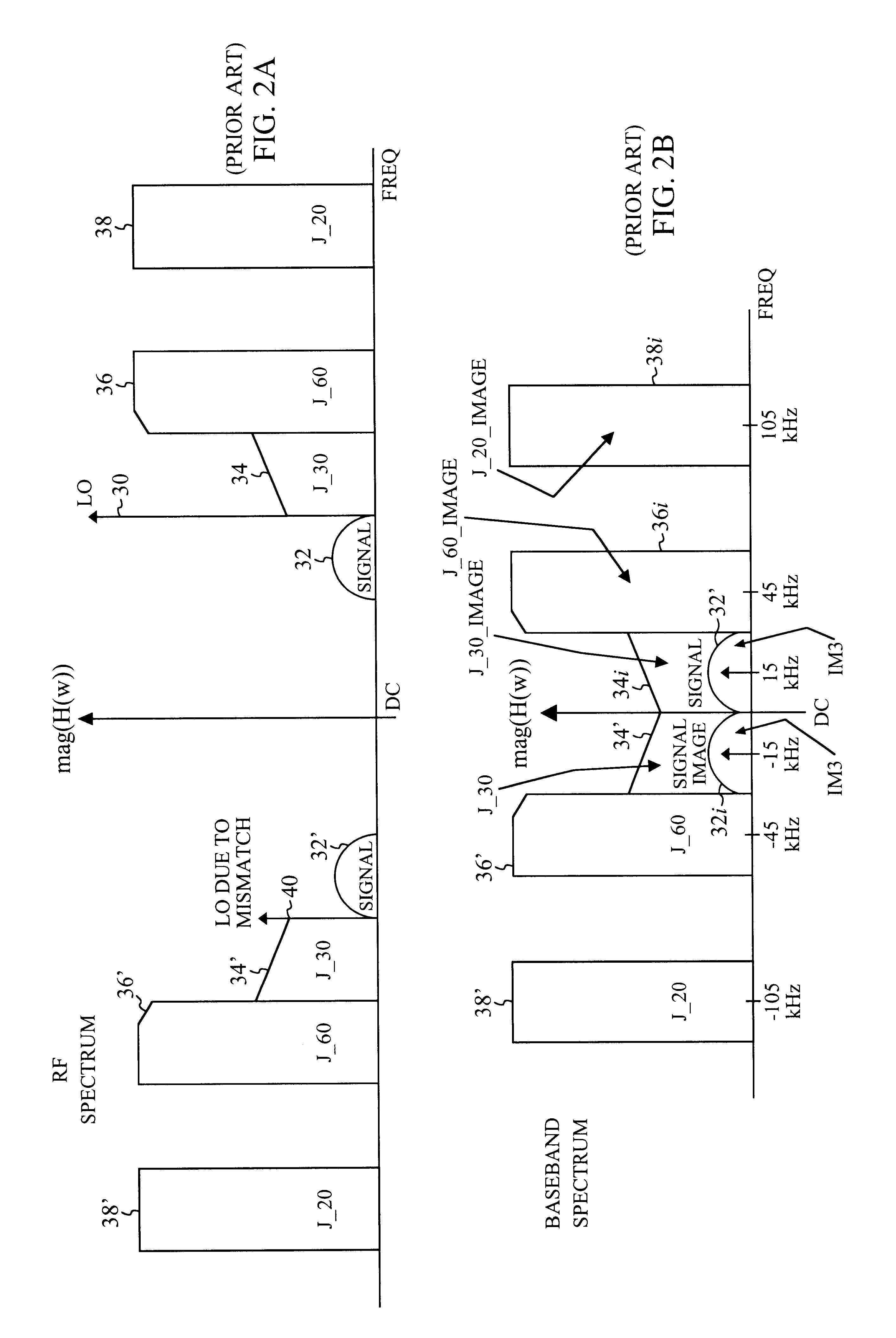System and method for I-Q mismatch compensation in a low IF or zero IF receiver
a receiver and iq mismatch technology, applied in the field of wireless communication, can solve the problems of not allowing conventional filtering, requiring additional circuitry, power consumption and additional expense to build the device, and output signals i(t) and q(t) that are not allowed
- Summary
- Abstract
- Description
- Claims
- Application Information
AI Technical Summary
Problems solved by technology
Method used
Image
Examples
Embodiment Construction
The present invention provides active correction of the I(t) and Q(t) signals to overcome the inherent mismatch and the resultant detrimental effects. As will be described in greater detail below, each communication device is unique and, in an exemplary embodiment, undergoes calibration at the factory. The calibration factors are stored in the device and used to automatically generate the compensated signals.
In an exemplary embodiment, the present invention is embodied in a system 100 illustrated in the functional block diagram of FIG. 3. As can be seen by the block diagram of FIG. 3, the present invention is applicable to any quadrature receiver, such as an advanced mobile phone system (AMPS), a global positioning system (GPS) receiver, a conventional cell phone system, or a PCS system. The GPS embodiment may include a GPS antenna 102, a filter 104, an amplifier 106, and an I-Q mixer circuit 108. Those skilled in the art will recognize that the I-Q mixer circuit 108 illustrates a s...
PUM
 Login to View More
Login to View More Abstract
Description
Claims
Application Information
 Login to View More
Login to View More - R&D
- Intellectual Property
- Life Sciences
- Materials
- Tech Scout
- Unparalleled Data Quality
- Higher Quality Content
- 60% Fewer Hallucinations
Browse by: Latest US Patents, China's latest patents, Technical Efficacy Thesaurus, Application Domain, Technology Topic, Popular Technical Reports.
© 2025 PatSnap. All rights reserved.Legal|Privacy policy|Modern Slavery Act Transparency Statement|Sitemap|About US| Contact US: help@patsnap.com



